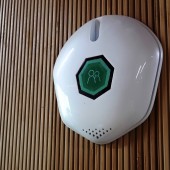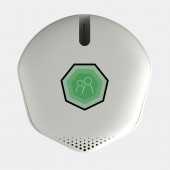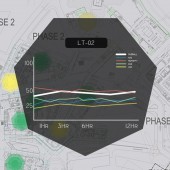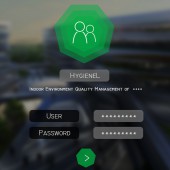DESIGN NAME:
HygieneL
PRIMARY FUNCTION:
Indoor Air Monitoring System
INSPIRATION:
I came up with this idea when i was doing internship in A*star, Singapore. I found that in Singapore people are staying long in air-condition buildings. However, they seldom notice that ventilation is not enough and the indoor environment quailty (IEQ) actually is really bad. Bacteria grows and CO2 concentration is high. This will cause sick building syndrome. We need a way to monitor the IEQ status for the whole building. Thus I designed this system.
UNIQUE PROPERTIES / PROJECT DESCRIPTION:
People spend 90% of their time indoor. However, the indoor air can be much more polluted than the outdoor. This will lead to sick-building syndrome, which includes asthma and other respiratory diseases.
In daily administration we need a betterway of showing the overall hygiene level.So we designed HygieneL system which contains the hardware and software part. We design this shell-like sensor node for deploying. This circuit system is able to detect VOCs, CO2, RH and temperature which can be analysis in the server.Based on java we make a visualization program system for the administrator to monitor the hygiene level of the whole campus.
OPERATION / FLOW / INTERACTION:
This system is not made for mobile devices. It's designed for campus management so all datas are sent to the management office and a software is speically designed for monitoring all datas. However, administrators can choose to open these datas to students.
PROJECT DURATION AND LOCATION:
The project started in June 2014 in Singapore and finished in November 2014 in Hangzhou,China.
FITS BEST INTO CATEGORY:
Digital and Electronic Device Design
|
PRODUCTION / REALIZATION TECHNOLOGY:
By applying Xbee and arudino it's convenient to deploy these sensor nodes and make them work in low power consumption. The sensors we use are TGS-series organic gas sensors and we develope a certain algorithm for classifying indoor hygiene level.
SPECIFICATIONS / TECHNICAL PROPERTIES:
120mm*120mm*30mm, the prototype shown in the image is a 2:1 model.
TAGS:
hygiene, indoor, air, bacteria, detection, WSN
RESEARCH ABSTRACT:
Through field research we found that in campus or building we need a efficient and effective way of detecting indoor environment quality. By reading literature we found that the only method of detecting bacteria indoor is sampling which costs a lot of time. So we made another attempt of detecting organic gas generated by bacteria. After applying SVM method for data training we sucessfully drew out a set of sensors to detect bacteria effectively. That's hard to find a vaild combination of sensors.
CHALLENGE:
For developing a combination of sensors to detect bacteria inside a room, we first tried to find bacteria sensor directly. Soon we knew that the only method of detecting bacteria indoor is sampling which costs a lot of time. So we made another attempt of detecting organic gas generated by bacteria. But all related papers are about herd feeding and harmful gas monitoring. We had to try sensors by ourselves. After applying SVM method we sucessfully drew out a set of sensors to detect bacteria effectively. Then we apply these set of sensors in HygieneL. We did data collection and data training in SUTD campus.
ADDED DATE:
2015-01-07 08:55:14
TEAM MEMBERS (5) :
Du Jiachun, Tony Quek, Tan Hwee Xian, Liang Hui Guang and Song Yuke
IMAGE CREDITS:
HygienL Project Team, 2014.
|










